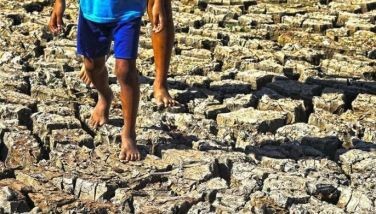Western Pacific region has highest rates of hepa B – WHO
MANILA, Philippines - The Western Pacific Region, where the Philippines is situated, has the highest rates of chronic hepatitis B prevalence in the world with almost 900 deaths per day, the World Health Organization (WHO) said yesterday.
In spite of this, the WHO said that countries in the region have “made great strides in the fight against hepatitis B, especially among children.â€
With the support of WHO, member-states have adopted the bold goal of reducing hepatitis B infections in children to less than one percent by 2017.
In 2005, member-states and WHO had committed to reducing the prevalence rate of hepatitis B in five-year-old children to less than two percent. Having achieved that milestone in 2012, member-states will now strive to reduce infection rates to less than one percent among children.
This goal will translate to an additional 60,000 averted hepatitis B-related-deaths per year in the region.
“Member-states have made dramatic gains in controlling hepatitis B in children. If we continue to work together, we can protect more lives from this debilitating disease,†said Dr. Shin Young-soo, WHO regional director for Western Pacific.
Hepatitis B is known as the “silent epidemic†because its symptoms appear long after infection, sometimes even decades later.
It is one of a group of infectious diseases causing inflammation of the liver, which can lead to liver cirrhosis or primary liver cancer. It can result in liver failure, which usually requires costly treatments, such as liver transplants, that strain both the patient and the health system.
WHO estimates that about 600,000 people die worldwide each year from causes related to Hepatitis B.
“Limited awareness of the threat of hepatitis B is a continual problem - many people do not associate the disease with liver cirrhosis and cancer due to the late onset of the symptoms,†the WHO said.
The health agency of the United Nations also believes that vaccination at birth and the three-dose vaccine for infants is crucial to curbing the infection rate in children.
In 2012, 20 million newborn infants (86 percent of those were born in the region that year) were vaccinated within 24 hours of birth, while 22 million infants (96 percent of those born in the region that year) completed the three-dose vaccination course.
But the WHO said there are three “potential obstacles†to vaccination at birth in certain countries. These are “health professionals might have limited access to newborn infants; hepatitis B vaccination might not be part of essential newborn care; and a lack of a continuous supply of the hepatitis B vaccine.â€
“Addressing these obstacles and expanding three-dose vaccine coverage will strengthen other routine immunization programs in member-states and help countries achieve the new 1 percent target,†it added.
- Latest
- Trending




























